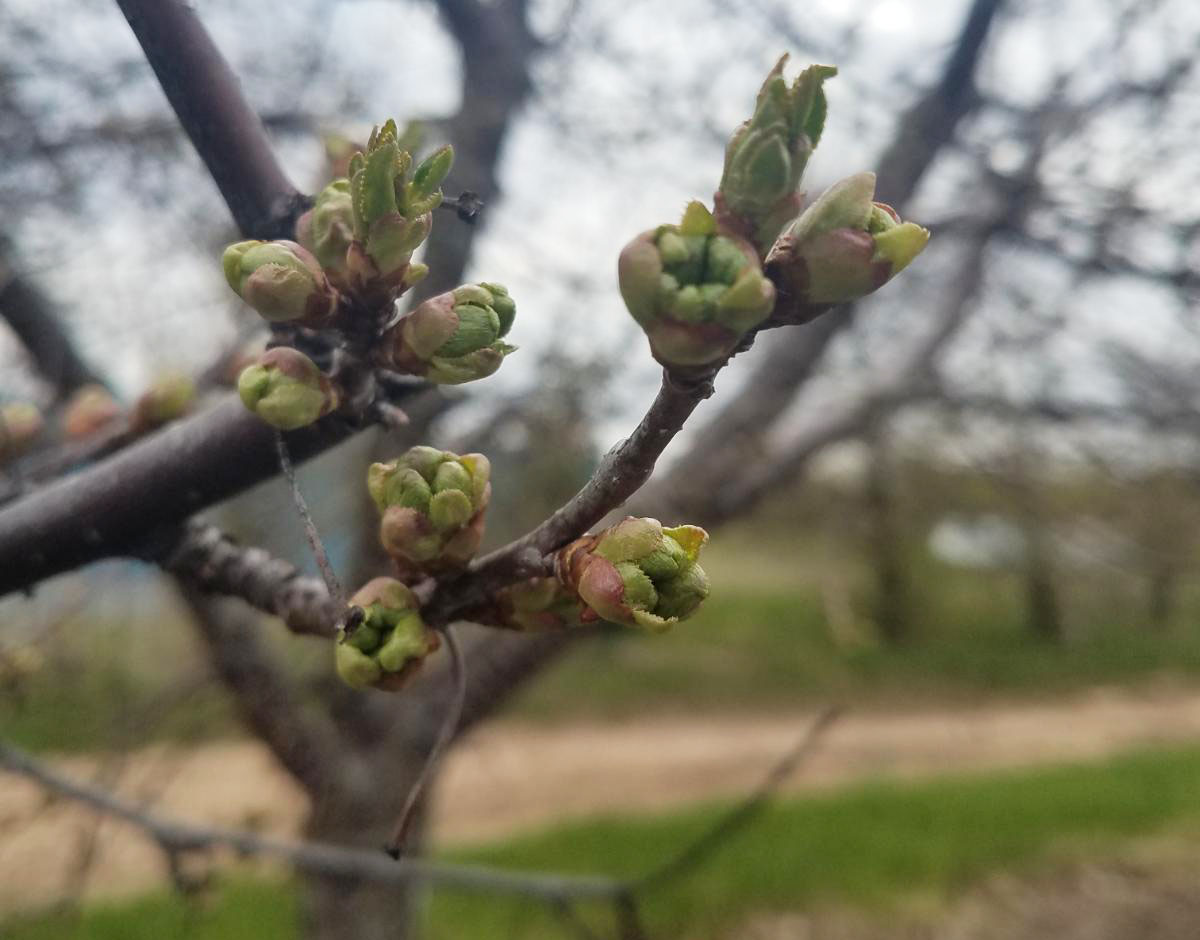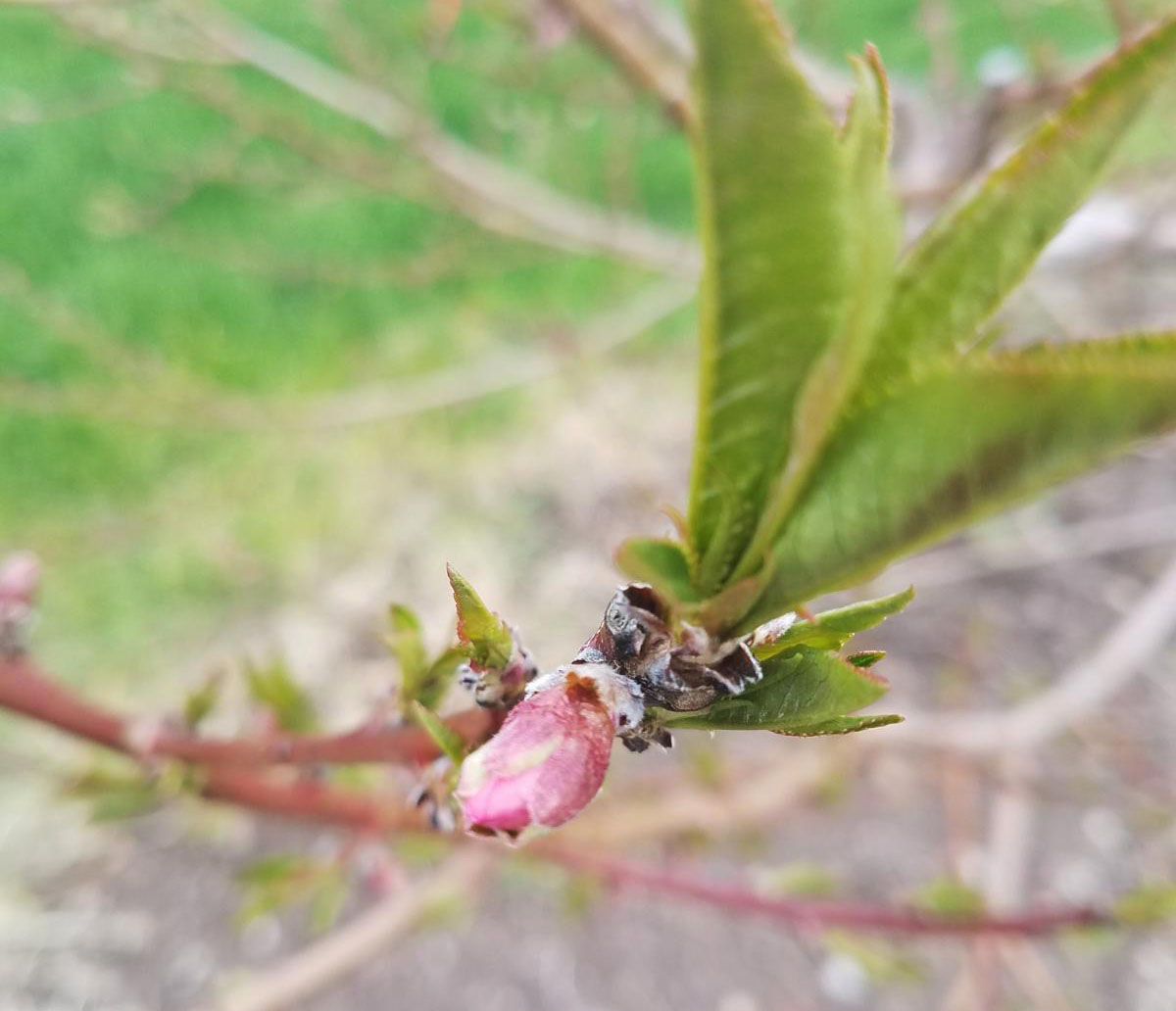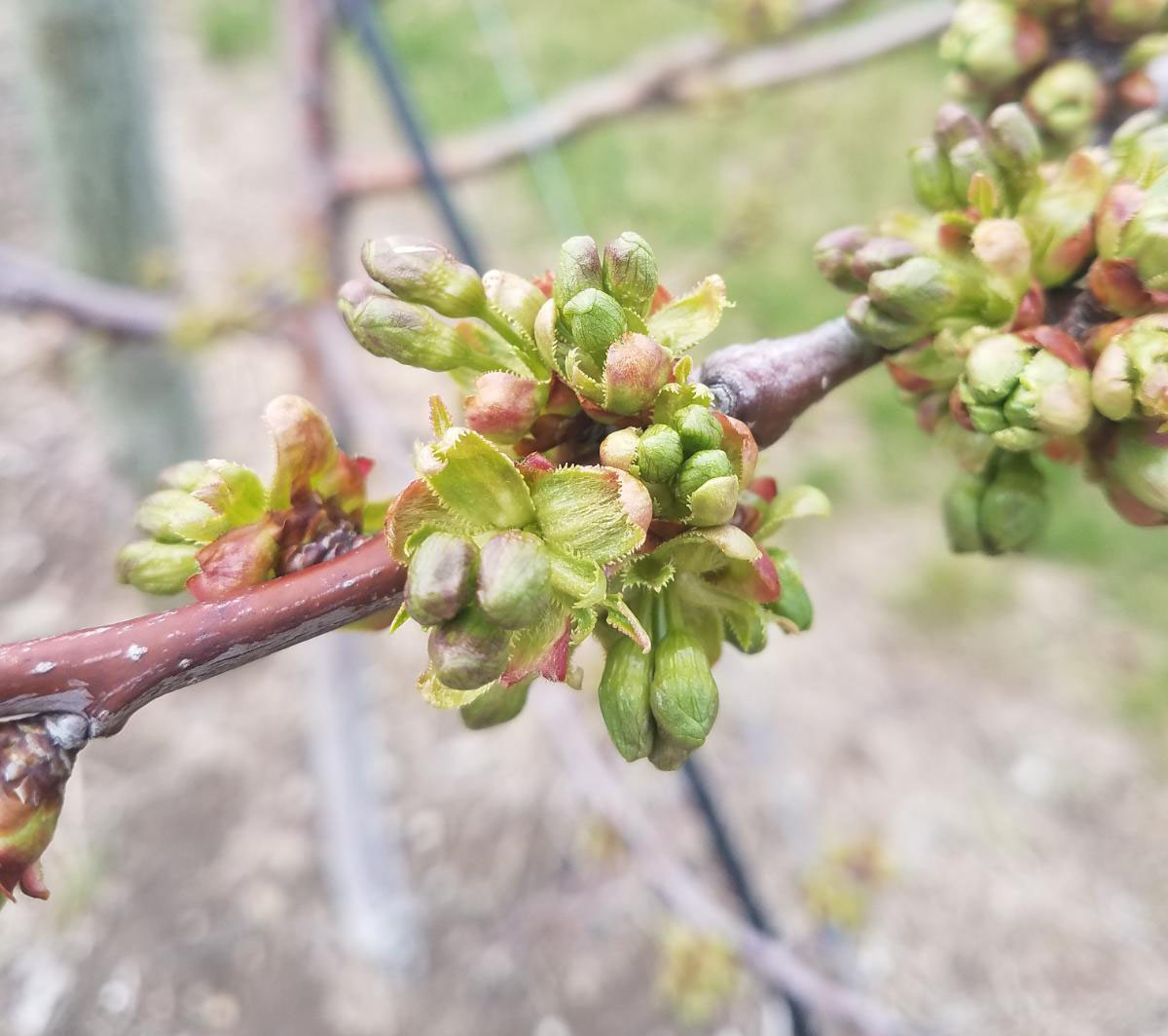West central Michigan tree fruit update – May 7, 2019
Crop development updates for tart cherries, apples, peaches and sweet cherries.

Weather report
Cool daytime temperatures and cold nights have kept tree fruit growth slow during the past two weeks in west central Michigan. Soils are still cold, which is contributing to the slow progress in tree fruit this year. We can see this reflected in the slow accumulation of growing degree days (GDD) thus far this season. This has also meant insect activity has been minimal due to the lack of heat.
Weather has certainly been cool so far this spring as we look back at the past five years. The region is now behind every year except for 2014 in accumulated GDD base 42, and shows a similar lag in the base 45 and base 50 accumulations. Growers considered 2018 to be an extremely cold, slow-starting year, but this year is actually sitting behind our accumulations on this date last season. Forecasts of daytime temperatures in the low 50s with overnight lows in the 30s and low 40s in the next seven-to-10 days mean this trend is likely to continue through the first half of May.
|
Current GDD accumulations as of May 7, 2019 |
|||
|---|---|---|---|
|
Station |
Current GDD base 42 |
Current GDD base 45 |
Current GDD base 50 |
|
Benona / Shelby |
181 |
126 |
67 |
|
Elbridge / Hart |
198 |
138 |
72 |
|
Hart |
191 |
132 |
68 |
|
Ludington |
180 |
122 |
61 |
|
New Era |
233 |
167 |
94 |
|
Shelby - East |
188 |
133 |
69 |
|
Average GDD accumulations during past five years |
|||
|---|---|---|---|
|
Year |
GDD base 42 |
GDD base 45 |
GDD base 50 |
|
2019 |
191 |
132 |
68 |
|
2018 |
225 |
167 |
98 |
|
2017 |
362 |
263 |
146 |
|
2016 |
318 |
232 |
126 |
|
2015 |
286 |
214 |
127 |
|
2014 |
168 |
111 |
46 |
|
Average of 5 years, not including current year |
271.8 |
197.6 |
108.6 |
Crop report
Apples range between half-inch green and tight cluster throughout the region. A tiny bit of pink can be seen at the tips of flower buds on some early varieties like Zestar and Idared, but we are still likely at least a week away from true pink stage. The region had its first major apple scab infection last week on April 30, with all west central Michigan State University Enviroweather stations recording full progress towards an infection event. Symptoms from any infections that occurred during this time will be visible in about another week to 10 days.
Apple grain aphids, redbanded leafrollers and spotted tentiform leafminers are active. Mating disruption for oriental fruit moth and codling moth has been deployed. No flight of either of these pests has occurred, but growers can likely expect the first oriental fruit moth to appear around pink timing in apples sometime next week.

Tart cherry flower buds have emerged and early bract leaves are just starting to unfold, but no flower tissues are visible. A fungicide application for cherry leaf spot will be needed later this week or early next week at many locations as bract leaves become fully expanded, as these early leaves are susceptible to the disease and can serve as a source of inoculum if infected early in the season. Cold weather and slow development means that we are still a couple of weeks away from insect concerns in tart cherry.

Peach trees are at calyx red to first pink throughout the region. Approaching bloom time will bring concerns of blossoms infections from American brown rot, but the potential for cooler weather during bloom this year should help to keep this issue in check as the optimal temperature for infection is between 72 and 77 degrees Fahrenheit, and spore production for this disease is greatest between 59 and 74 F. Current weather forecasts suggest weather during bloom this year may be in the low to mid 50s for much of bloom.
Apricots are in bloom. Looking at the 10-day forecast, it seems likely that cold weather will inhibit bee activity during their bloom this season.

Sweet cherry trees are at tight cluster, and a tiny amount of white can be seen at the tips of flower buds on some very early varieties. Growers who plan on using ReTain to increase flower viability and retention this year should be getting ready for the first application at “popcorn” timing, as this is not far off in the earlier varieties. Pruning should be avoided during this stretch of cold, wet weather due to concerns of bacterial canker.



 Print
Print Email
Email
